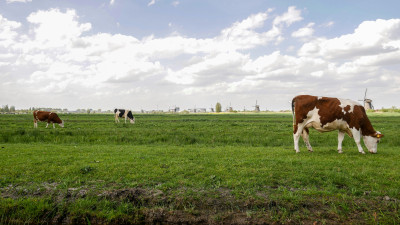Published Apr 23, 2024
Latin America is an emerging biotech hub that’s been overlooked by New Zealand for too long, writes Wellington UniVentures Business Development Manager Dr Matias Kinzurik. Fresh from a recent trip to the region where he met with industry, investors, and researchers, he argues for increased collaboration between LatAm and NZ, especially in the field of synthetic biology.

Dr Matias Kinzurik
My role as a Business Development Manager at Wellington UniVentures involves reaching out to different industry players, assessing their technical challenges, and then identifying researchers at Victoria University of Wellington who could help solve these problems. Understanding how best to bridge the gap between industry and academia, particularly around biotechnology, is my passion.
On a recent trip back to my hometown of Buenos Aires, Argentina, I re-engaged with old colleagues who were now working in diverse fields from synthetic biology, and alternative proteins, to animal health. I asked them how the sector had evolved in the 15 years I’ve been away, and discovered an abundance of mutual benefits NZ and LatAm could gain from each other through collaborations in R&D.
While LatAm is as diverse and complex a region as you can get, its southern cone (Argentina, Uruguay, and Chile) has plenty of similarities with NZ in terms of climate, geography, and the predominance of primary industries: dairy, beef, wine, and horticulture are key to both of our economies. As a result, we face similar challenges derived from climate change, including productivity losses through extreme weather, novel pests and diseases, and a drop in produce quality caused by both.

Dairy farming is a key industry in both regions
However, there is one major advantage that LatAm has over NZ: this region is a pioneer in the trialling and commercialisation of synbio. Argentina has been growing genetically modified (GM) crops since the 1990s. It’s recognised as the second most GM friendly country after the USA, growing more than 25 million hectares of GM crops. This translates to almost all of its soybean, maize, and cotton being GM1. LatAm farmers are eager to adopt genetic engineering, and welcome new developments that make their crops more profitable and easier to grow.
At the same time, the biotech sector in LatAm has been undergoing a renaissance over the last decade. Venture capital firms, such as Zentynel (Chile), GRIDX Exponential and The Yield Lab (Argentina), and Vesper Ventures (Brazil) have set up shop and some even have mandates for investing only in local talent and helping develop local biotech start-ups. As a result, biotech start-up hubs have popped up in Rosario (Argentina), Sao Paolo (Brazil), and Santiago (Chile). The combined valuation of LatAm’s 'tech ecosystem' was valued at $221 billion in 2020 and is expected to reach more than $2 trillion by 20302.
But LatAm as a region is still largely overlooked by those of us who commercialise science in NZ. Whether partnering with local experts or selling a product, we generally pursue partners in markets with the largest purchasing power, such as the US, Europe, and Australia.
When it comes to agritech, especially technologies involving synbio, I see an excellent opportunity for research institutes in NZ to partner with LatAm on R&D and establishing an end user market.
While we await our parliament to debate on the fate and extent of GM deregulation in NZ, which may take years to implement, we should explore the potential for partnerships between a country that has both the funding and expertise to develop high-end genetically engineered crops (NZ), but an inability to grow these locally at scale, and a region that can (LatAm).
In an industry where time to market determines a product’s profitability, what would be the efficiency gains of having, for example, an engineered crop developed in Wellington, tested in field trials in Buenos Aires, and marketed by a sales team in Sao Paolo?

Buenos Aires, Argentina
There is also something to be said about the alignment of interests in both regions when it comes to developing solutions for climate change. Few other regions create as much, or care as much, about biogenic methane production from their cattle and sheep than NZ and LatAm. Likewise, both regions rely on pasture feed for their animals. Could NZ biotech startups working in this space seek a strategic alignment with LatAm institutes around the development of synbio approaches to reducing methane?
And when it comes to biosecurity risks threatening our primary industries, LatAm is ahead of the curve simply because these pests are already endemic to the region, whereas they haven't come to NZ - yet! We could partner on diseases of common interest, like foot and mouth in farm animals, and learn from each other so to strengthen our response when and if this disease comes to our shores. The potential for R&D collaborations between NZ and LatAm holds immense potential for both regions. By leveraging each other’s strengths and resources, we could unlock innovations in biotech that not only addresses local challenges but also fosters global impact.
Fellow Kiwis, Latinos, Science Commercialisation professionals, what do you think? Do you know any companies in Latin America already? Let's talk about how we can make it happen!
1 ISAAA (2018). Global Status of Commercialized Biotech/GM Crops in 2018: Biotech Crops Continue to Help Meet the Challenges of Increased Population and Climate Change. ISAAA Brief No. 54. Ithaca, NY: ISAAA.
2 https://www.labiotech.eu/in-depth/biotech-deep-tech-investment-latin-america/
Connect with Matias

